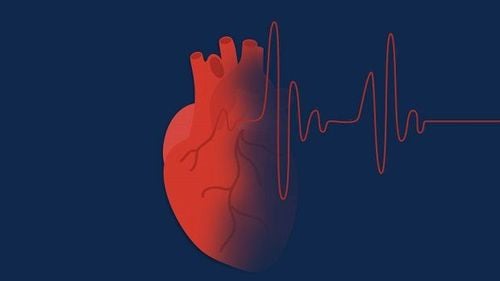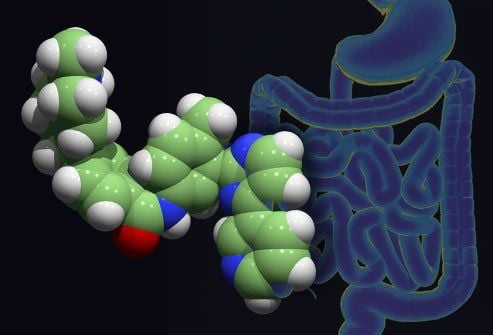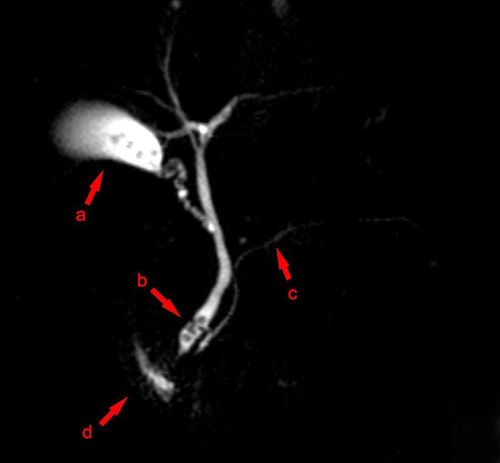This is an automatically translated article.
The article is professionally consulted by Master, Doctor Nguyen Van Huong - Department of Diagnostic Imaging - Vinmec Danang International General Hospital.
Cerebral infarction is a leading disease, one of the three most common causes of death and disability in patients. Today, thanks to the application of scientific advances in the diagnosis and treatment of acute cerebral infarction, it has partly reduced dangerous complications caused by the disease.
1. What is acute cerebral infarction?
Acute cerebral infarction, also known as vascular occlusion, is also a form of cerebrovascular accident, a disease that occurs when an area of the brain is not supplied with an adequate amount of blood due to narrowing or occlusion of a cerebral artery. The part of the brain that has stopped supplying blood (cerebral ischemia) and the part of the brain that dies due to lack of blood supply is called a cerebral infarction.People with acute cerebral infarction will have a high risk of dying quickly and experiencing many serious sequelae that are difficult to recover even with timely emergency care.
The most common cause of acute cerebral infarction is atherosclerosis, a blood clot that blocks blood vessels in the brain, which often occurs in people with heart disease (valvular heart disease, non-atherosclerotic artery disease, atrial fibrillation) or atrial fibrillation. Blood diseases also have a very high risk of acute cerebral infarction.
Some other factors also increase the risk of acute cerebral infarction including:
Smokers
● Eat a lot of foods containing cholesterol
● Eat less vegetables, too salty, too sweet.
● People with high blood pressure, diabetes
● People with little physical activity or a family member with atherosclerosis
● A polluted living environment...

Hút thuốc lá nhiều sẽ làm tăng nguy cơ mắc bệnh nhồi máu não cấp
2. Advantages of MRI in the diagnosis of acute cerebral infarction
MRI technique in diagnosing acute cerebral infarction has many advantages over other methods such as computed tomography, ultrasound... that is to detect cerebral infarction at a very early stage (parenchymal stage). the brain can still recover), investigate the blocked blood vessels, narrowing. ● No radiation exposure, no need for intravenous contrast agents, multiple scans can be performed to monitor and evaluate the progression of the disease.3. Procedure to perform MRI scan to diagnose acute cerebral infarction
The steps of MRI to diagnose acute cerebral infarction in a patient include:● Step 1: The patient is removed metal jewelry from the body
● Step 2: The patient uses headphones to reduce the sound noise and contact the technician to perform, at the same time can listen to music for mental comfort during the shooting process
● Step 3: Keep the head in a fixed position, the machine will perform many scans, each There will be noise during the scan, the MRI scan is painless, and the patient may feel a bit of heat. Shooting time is about 15-30 minutes.
4. Notes when performing MRI to diagnose acute cerebral infarction

Khi thực hiện chụp MRI chẩn đoán nhồi máu não, phụ nữ không nên trang điểm vùng mắt
The patient should be taken to the hospital as soon as possible as soon as symptoms are detected (best you can call the emergency room). of the hospital so that they can pick you up at the door and have the vehicles ready for emergency treatment)
Vinmec International General Hospital put into use a 3.0 Tesla Silent resonance imaging machine. Magnetic resonance imaging machine 3.0 Tesla with Silent technology of GE Healthcare (USA).
● Silent technology is especially beneficial for patients who are children, the elderly, weak health patients and patients undergoing surgery
● Limit noise, create comfort and reduce stress customers during the shooting process, helping to capture better quality images and shorten the shooting time.
● Magnetic resonance imaging technology is the technology applied in the most popular and safest imaging method today because of its accuracy, non-invasiveness and non-X-ray use.
Master of Doctor Nguyen Van Huong used to be a Lecturer in Medical Imaging at Danang University of Medicine and Pharmacy, many years of experience working in hospitals such as Cancer Hospital; Da Nang Hospital; Da Nang Obstetrics and Gynecology Hospital.
With his dedication to his work, dedication to the medical profession in general and the specialty of diagnostic imaging in particular, Dr. Huong is always loved and trusted by patients.
To register for examination and treatment at Vinmec International General Hospital, you can contact Vinmec Health System nationwide, or register online HERE.
MORE:
What are the benefits of Magnetic Resonance Imaging (MRI)? What is Contrast? Traumatic brain injury: How to recognize and treat?














